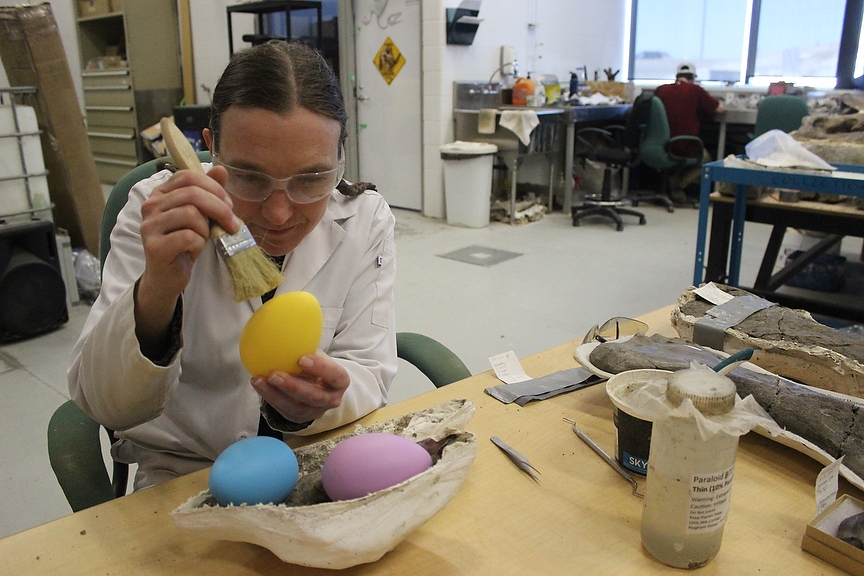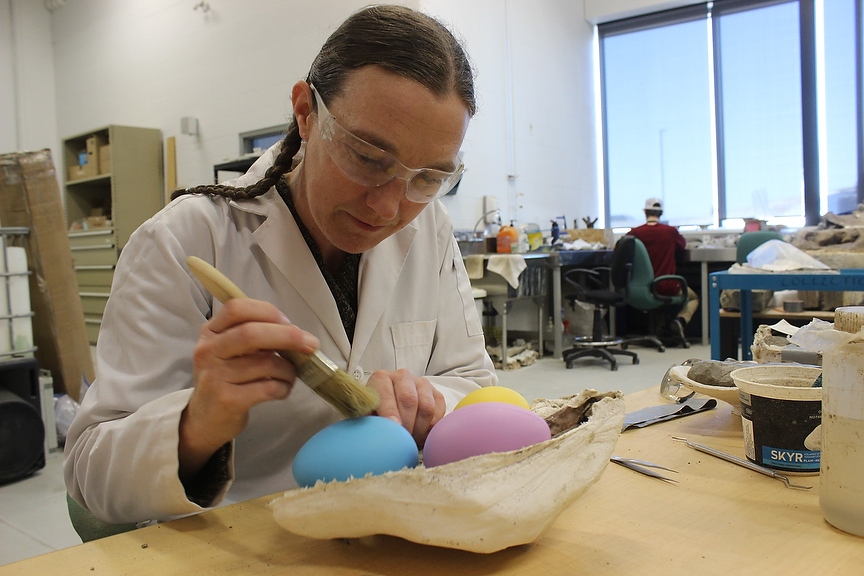
A clutch of fossilized eggs discovered in the Pipestone Creek bonebed may prove to be a prehistoric connection to one famous holiday icon.
Philip J. Currie Dinosaur Museum curator Emily Bamforth said the eggs, dated to the late Cretaceous period 100 million to 66 million years ago, come from a species of prehistoric monotreme, or egg-laying mammal, which split from other mammal groups 166 million years ago.
“On the mammal family tree, we have three major groups of mammals,” said Bamforth.
“You have the monotremes like the platypus and the spiny echidna that lay eggs; as we move up the tree, we have the appearance of marsupials which have immature young that mature in the pouch, and then we have fully formed placental mammals, and this is where we fit in as well.”

Bamforth said palaeontologists with the museum have managed to extract DNA out of the eggs and determined that they contain the “Cho-egg gene,” the unique gene which causes the chocolatization of eggs.
“This is the unique gene that makes this particular species unique,” said Bamforth.
Bamforth said that with this discovery, palaeontologists have finally determined where on the mammal family tree the modern-day Easter Bunny exists.
For decades, scientists have speculated that the Easter Bunny shared characteristics with monotremes such as the platypus, despite looking like your average modern rabbit.
Bamforth speculated that this may be a case of convergent evolution, where unrelated organisms independently evolve similar traits.
The prehistoric Easterbunnymorpha, or Thumpersaurus rex (the name is still to be determined), predates the appearance of modern-day rabbits by approximately 60 million years.
“Obviously, this is a long time before lagomorphs appear,” said Bamforth.
“We’re looking at a late Cretaceous mammal. There were mammals around at the same time as Pachyrhinosaurus, but for the most part they were very small.
“This fossil Easter Bunny would feel the same ecological niche as bunnies today.”
It’s an exciting prospect that the ancestors of the modern Easter Bunny may have wandered the prehistoric shores of Cretaceous Alberta, hiding its eggs from dinosaurs and predators such as Saurornitholestes, a raptor-like dinosaur whose remains have been found in the Grande Prairie area.
But Bamforth noted this was still mostly conjecture from the museum scientists.
“Obviously we’re still working on phylogenetic analyses,” she said.
“We still have to work with some more paleomammologists on this.”
The Easter Bunny declined to comment.